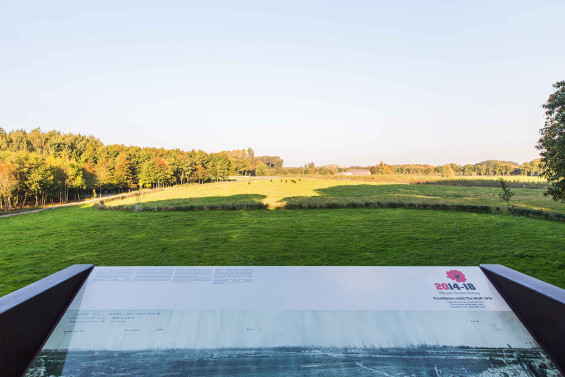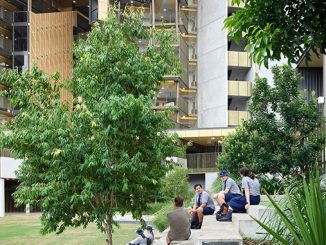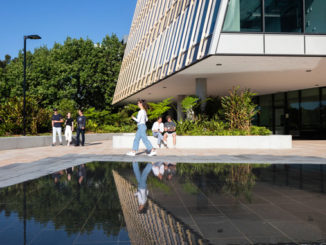The Bluff in the notorious ‘Ypres Salient’ is a unique wartime landscape that survives from the First World War. The site was the scene of widespread feverish digging of underground passages and shafts, mine explosions, sabotage and attempts at eavesdropping. In the context of the cultural tourism project, ‘Remembrance Park 14-18’, subtle measures in and around the site have been taken to improve access for visitors and so that visitors can see what the unique landscape framework in which the fighting took place looked like.
A landscape of relics
The Bluff has remained intact since the end of the World War I. You can still see slight differences in levels, the result of bomb blasts. Many underground passages still exist, which regularly cause the ground to collapse. And buried in the ground are bombs, munitions and soldiers, who met their end fighting here. Nature has slowly, over the space of 100 years, spontaneously taken over this spot.
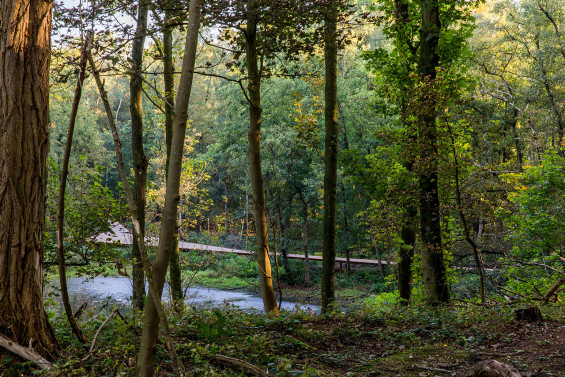
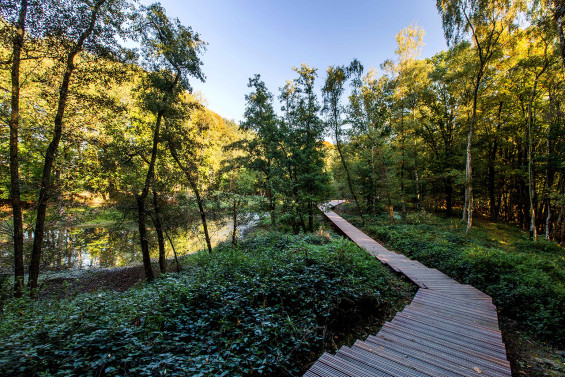
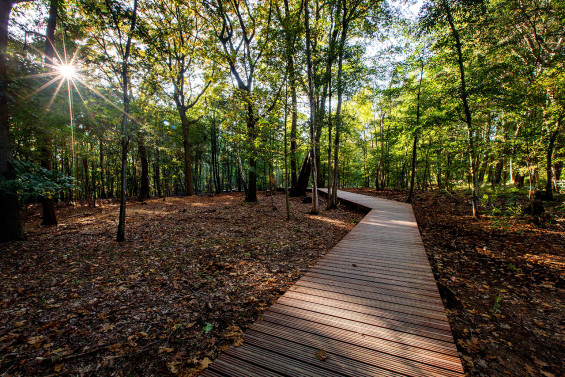
Subtle interventions
The works in this unique landscape have been executed subtly and without disturbing the underground. From the car park, visitors are led to the war zone. The visit starts at a covered information pavilion with an information film. Between the mine and bomb craters, which are now often under water, a long decked pathway provides for a rare experience. The path leads visitors to The Bluff, where the English positions were 10 metres higher than and just 40 metres from the lower-lying German line. At the highest point, there is a lookout with extensive views over No Man’s Land, the neutral zone between the front lines. The historical canal lock, some 700 metres from The Bluff, was given the name, Gordon Post, during the war and was used by the British as battalion headquarters and first-aid post. Here, a floating bridge across the water gives a unique view into the lock, now overgrown with ferns. The bridge links the recreational trails.
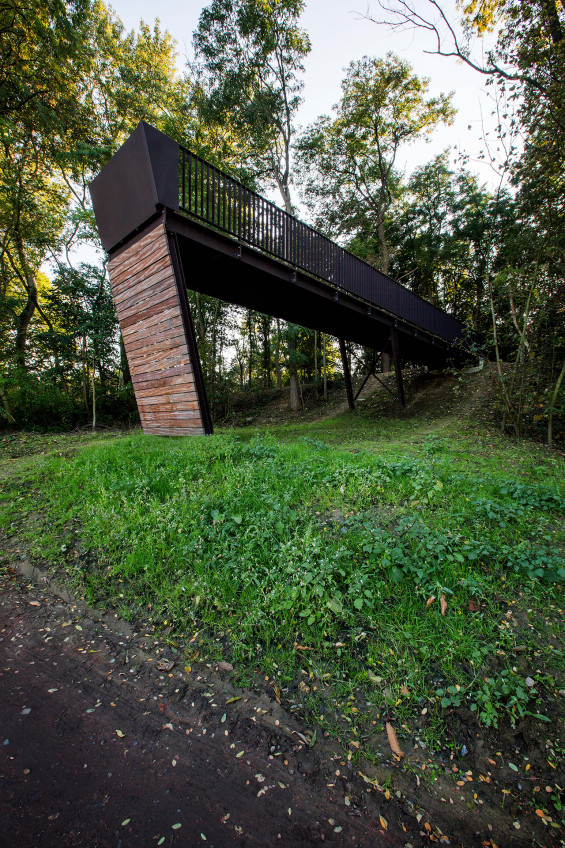
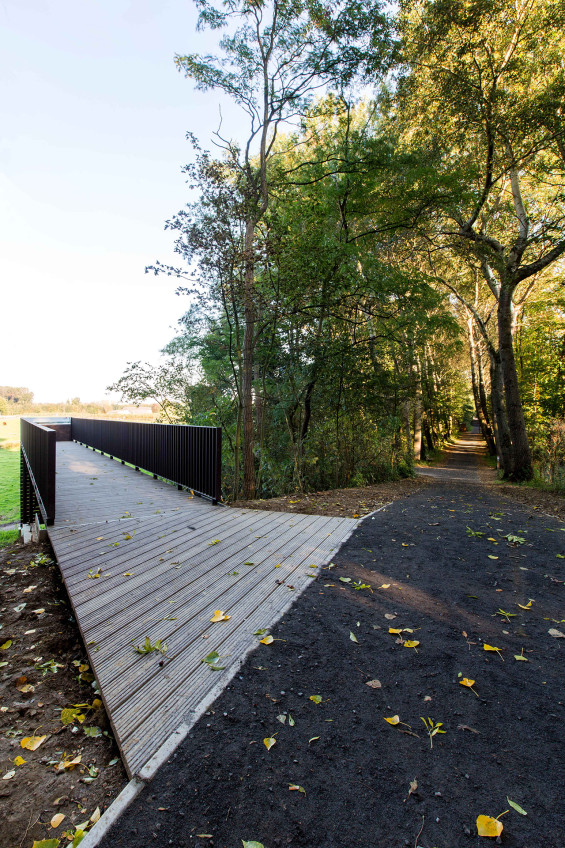
Remarkable presentation of the landscape
What is unusual about the interventions is the staging, which provides ample opportunity for walking. The removal in certain places of trees that had sprung up naturally has allowed the image of the raw, bleak wartime landscape to be recaptured, while other areas have deliberately not been opened up. The former lines are indicated by steel strips in the ground and differences in level are emphasised by steps. The materials used (wood and steel) are a reference back to the war.
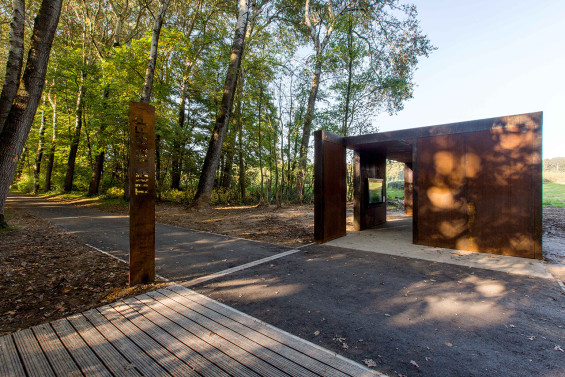
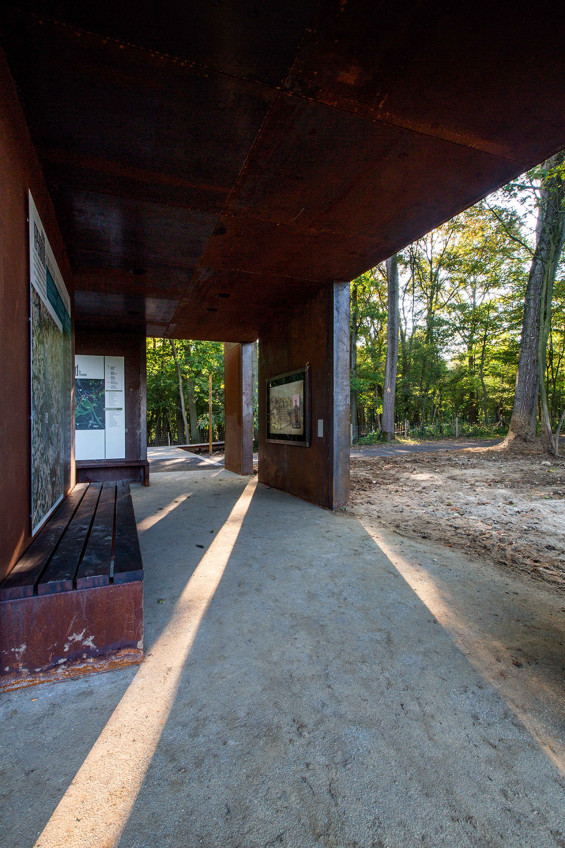
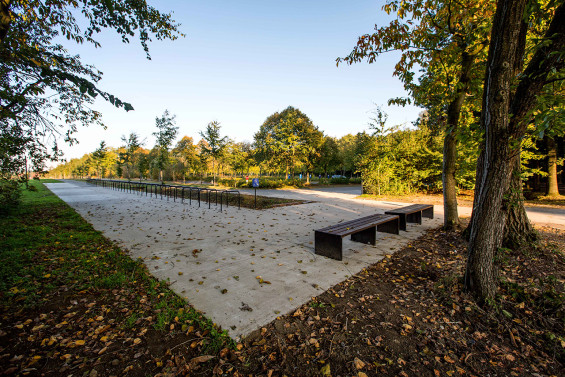
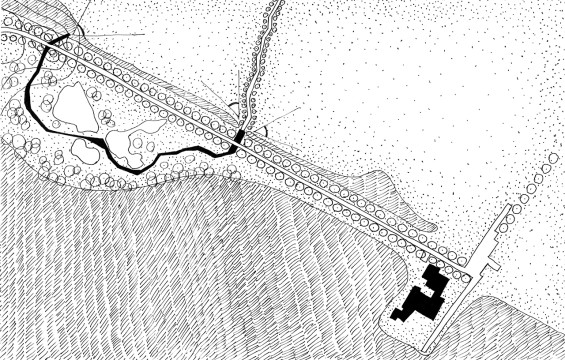
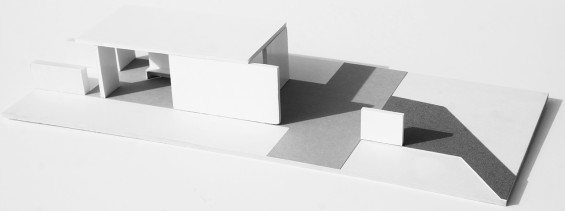
Landscape Architecture | OMGEVING
Designers | Koen Moelants, Tompy Hoedelmans, Peter Seynaeve, Luc Wallays, Kevin Favere, Sofie Vandervliet
City | Ypres, Belgium
Client | Province of West Flanders
Year of design | 2013
Completion date | 2015
Area | 20.000 m²
Photos | Yannink Milpas
Plans and Model | OMGEVING
Text | OMGEVING

